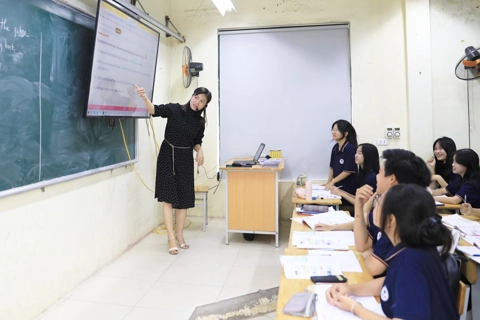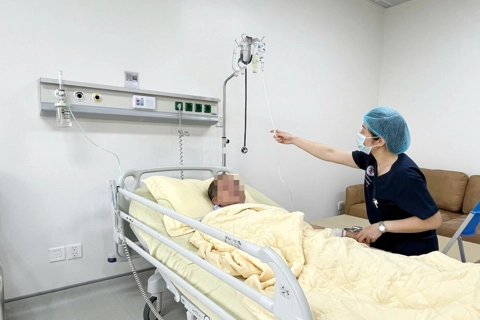Hanoi to reduce third childbirth rate this year
Hanoi has been trying to keep the birth rate reasonably low and control the sex ratio at birth.
Hanoi will make effort to reduce the third childbirth rate by 0.1% in 2023, according to the Deputy Director of the Hanoi Department of Health, Vu Cao Cuong.
To achieve the goal, Hanoi’s health sector will control the sex imbalance at birth, and continue to expand screening, diagnosis, and treatment for some diseases before birth in the capital city until 2030, the deputy director said.
He added that in 2022, Hanoi's population reached around 8.4 million people (accounting for 8.4% of Vietnam’s population). “In particular, with the city control of gender imbalance at birth, the birth sex ratio last year stood at 112.5 boys to 100 girls, a decrease from 2020 when it was 113.5 to 100,” Cuong said.
A couple receives advice on reproductive health from a doctor at the Medlatec General Hospital in Hanoi. Photo: Medlatec |
Cuong said the gender imbalance was decreasing, but the third childbirth rate tends to increase. Districts with high third-child birth rates include Hoang Mai, Dong Anh, Hoai Duc, and Cau Giay.
"Vietnamese parents are encouraged to have two children per family. However, due to the deep-rooted preference for sons, many couples with only daughters always want a male child because many believe that only sons can take care of venerating their ancestors and maintaining the lineage," explains the deputy director.
"Many families in Hanoi want to have more children, especially because of better economic conditions, so they decide to have more than two."
Thus, third-child is a problem, as the capital city aimed to maintain a reasonably low birth rate and control the sex ratio at birth, according to Cuong.
Although appreciating the achievements of the city's population and family planning efforts over the years, which have made positive contributions to the capital’s socio-economic development, the official said it was necessary to keep implementing measures to control the gender imbalance, particularly the third-child birthrate.
He stressed that it is necessary to raise awareness of the problem and change the attitude of the population to encourage families to have only two children.
The municipal Department of Population and Family Planning will continue to focus on communication campaigns, counseling, and direct dialogue with couples of reproductive age, while providing them with contraceptives, according to the deputy director.










